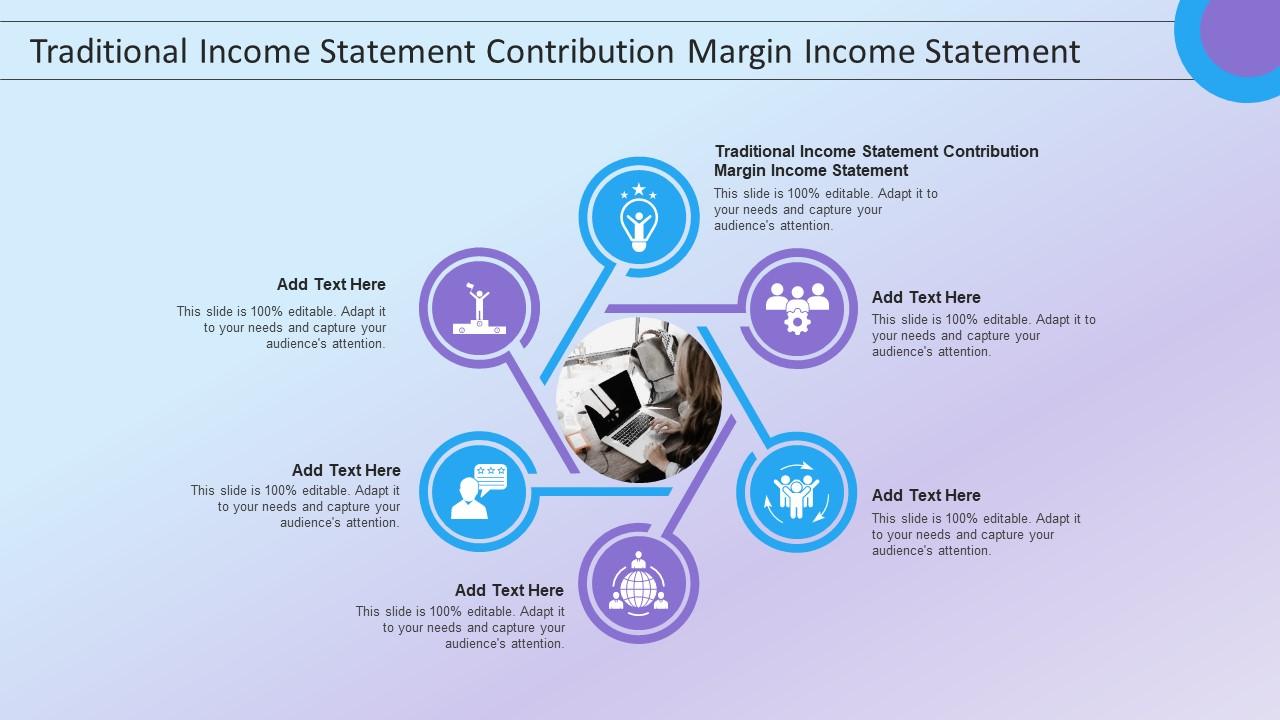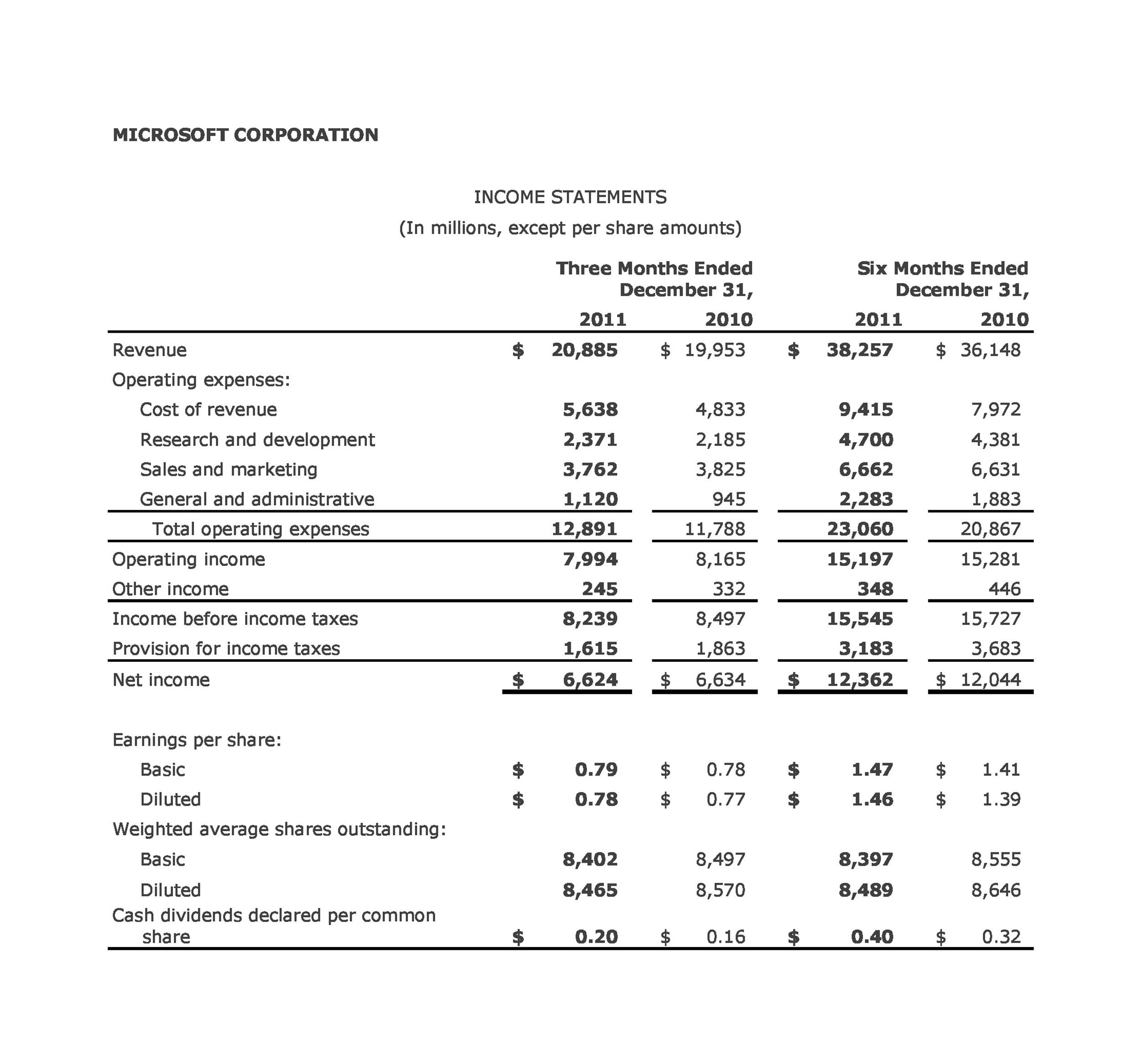The Traditional Income Statement Absorption Costing Income Statement Format & Examples

We get it, preparing a traditional income statement can be REALLY overwhelming, especially when you’re not sure how to interpret the information you’ve compiled. Did you know that the average loan amount of a small business amounts to $100k? (2) Building trust with your lenders is important to help you boost your funding applications. With an income statement, you can provide potential sponsors and financial institutions with an overview of your ability to pay which to help you secure loans for operation and expansion.
- These are all expenses linked to noncore business activities, like interest paid on loan money.
- It’s a map guiding you through your business adventure, showing you how to earn more by being smart with your expenses and keeping a close eye on every sale.
- All three documents must be reviewed together to get a clear picture of the financial health of the business.
- These differences highlight the need for a comprehensive understanding of financial statement terminology to accurately interpret and assess a company’s financial health.
Provides Detailed Information
EBIT and EBITDA are crucial metrics used to assess a company’s operational efficiency and cash flow generation. Understanding these components aids in evaluating the financial health and performance of a business. In contrast, the “non-traditional” one is the variable income statement. It is a financial computation of profit that separates variable costs from fixed costs.
Income Statement: Tracking Profit and Loss in a Predefined Period
Income statements can also be used to make decisions about inorganic or organic growth, company strategies, and analyst consensus. Typically, investors prefer looking at a company’s operating profit figure rather than a company’s bottom line as it gives them a better idea of how much money the company is making from its core operations. With the income statement detailing the categories of revenues and expenses of a company, management is able to see how each department of a company is performing. Operating expenses totaling $37,000 were then deducted from the gross profit to arrive at the second level of profitability – operating profit which amounted to $6,000. This is the profit before any non-operating income and non-operating expenses are taken into account. If you prepare the income statement for your entire organization, this should include revenue from all lines of business.
Unlock Success: Why Tracking Annual Business Revenue is Essential for Your Service-Based Business
Debt interest expense is deducted from operating profit, to determine a company’s taxable income. Appvizer provides you with a glossary to clarify these concepts and help you manage your business with peace of mind. A traditional income statement is key to learning more about a company and how well it is performing. Jason Ding is a seasoned accountant with over 15 years of progressive experience in senior finance and accounting across multiple industries. Jason holds a BBA from Simon Fraser University and is a designated CPA. Jason’s firm, Notion CPA, is an accounting firm with a business-first focus.
Company B Income Statement
This document communicates a wealth of information to those reading it—from key executives and stakeholders to investors and employees. Being able to read an income statement is important, but knowing how to generate one is just as critical. When it comes to financial statements, each communicates specific information and is needed in different contexts to understand a company’s financial health.
Cost Accounting in Income Statements
Save more by mixing and matching the bookkeeping, tax, and consultation services you need. On SoFi’s marketplace, you can shop top providers today to access the capital you need. Dear auto-entrepreneurs, yes, you too have accounting obligations (albeit lighter!). Accounting books, annual accounts, compulsory chartered accountants… Find out how this alternative financing method works, with its many advantages.

Next, we subtract selling and administrative expenses, which are costs not directly tied to making products but necessary for running the business. After taking away examples of liabilities these expenses from the gross margin, we get the operating income. This number shows us how much money the business really made after covering all its costs.
Once you have the cost per unit, the rest of the statement is fairly easy to complete. This includes sales, cost of goods sold, and the variable piece of selling and administrative expenses. The matching principle states that we must match revenue with expenses. Yes, traditional income statement has limitations as it does not take into account non-cash items, such as depreciation, and may not accurately reflect a company’s cash flow.
Also, remember any other money spent or made that doesn’t fit neatly into these categories. This shows if your company made money or lost money during the period. Once the contribution margin is calculated, you then subtract all applicable fixed costs to arrive at a net profit for that period. Investors are highly interested in income statements as core financial statements that hold valuable information about a company’s financial health. A profit and loss statement can help investors make decisions about what to include in their portfolio or their client’s portfolio.
Following operating expenses are other forms of income, known as income from continuing operations. This includes operating income, other net income, interest-linked expenses, and applicable taxes. Added these together with operating income arrives at a net income of $88.1 billion for Microsoft. Traditional income statements classify costs by manufacturing costs and non-manufacturing expenses (or operating expenses). This report is revenue, showing the costs and expenses in the period in question, with the net profit or loss.
Preparing financial statements can seem intimidating, but it doesn’t have to be an overwhelming process. We’ve broken down the steps for preparing an income statement, as well as some helpful tips. Net income—or loss—is what is left over after all revenues and expenses have been accounted for. If there is a positive sum (revenue was greater than expenses), it’s referred to as net income.

